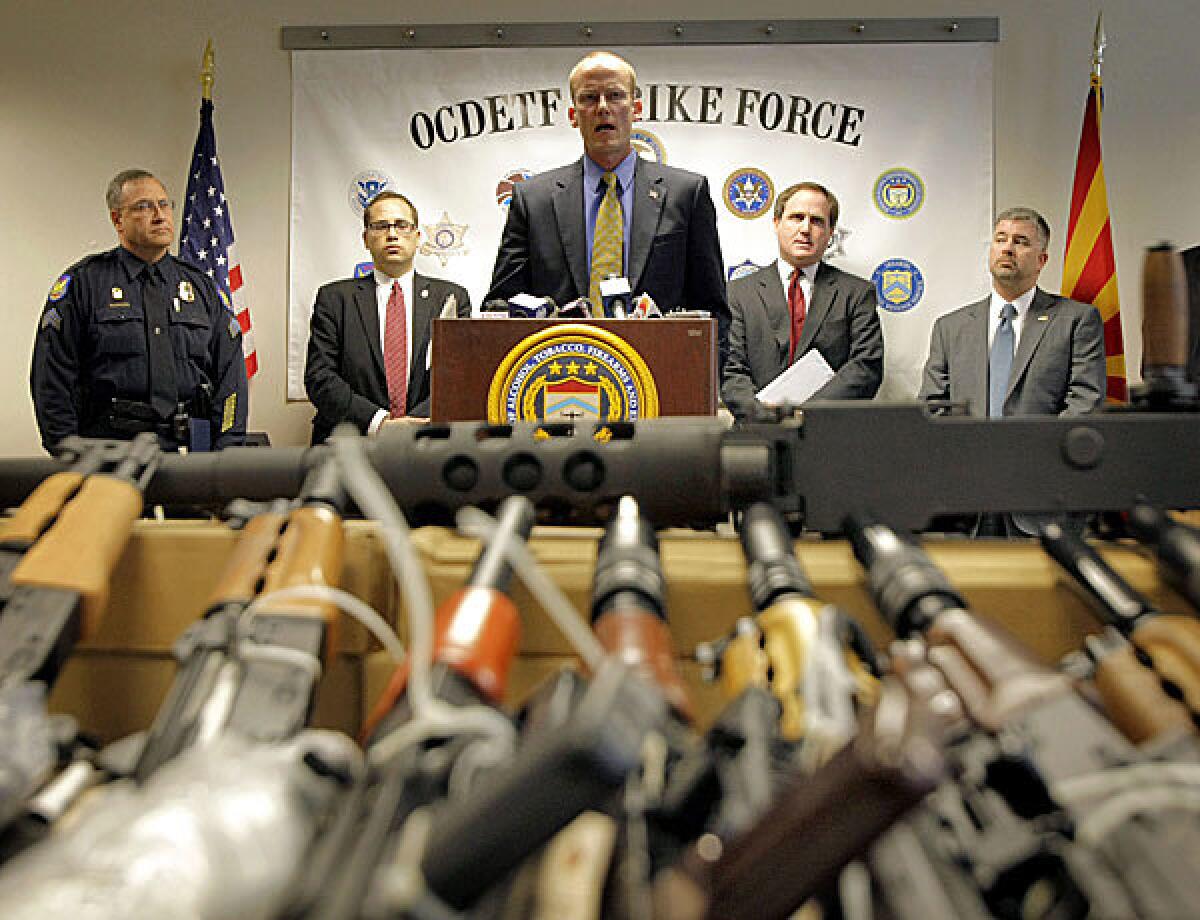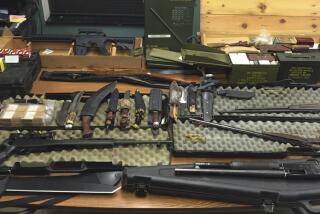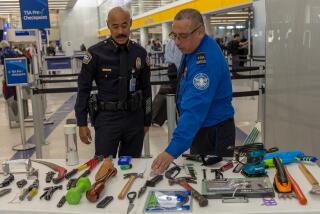Firearms from ATF sting linked to 11 more violent crimes

- Share via
Reporting from Washington — Firearms from the ATF’s Operation Fast and Furious weapons trafficking investigation turned up at the scenes of at least 11 violent crimes in the U.S., as well as at a Border Patrol agent’s slaying in southern Arizona last year, the Justice Department has acknowledged to Congress.
The department did not provide details about the crimes. But The Times has learned that they occurred in several Arizona cities, including Phoenix, where Fast and Furious was managed, as well as in El Paso, where a total of 42 weapons from the operation were seized at two crime scenes.
The new numbers, which expand the scope of the danger the program posed to U.S. citizens over a 14-month period, are contained in a letter that Justice Department officials turned over to the Senate Judiciary Committee last month.
In the letter, obtained by The Times on Tuesday, Justice Department officials also reported that Bureau of Alcohol, Tobacco, Firearms and Explosives officials advised them that the agency’s acting director, Kenneth E. Melson, “likely became aware” of the operation as early as December 2009, a month after it began.
Melson has said he did not learn about how the operation was run until January of this year, when it was canceled.
The July 22 letter, signed by Assistant Atty. Gen. Ronald Weich, was sent to Sens. Patrick J. Leahy (D-Vt.) and Charles E. Grassley (R-Iowa), the top members of the Senate Judiciary Committee. It was in response to questions posed to the Justice Department about Atty. Gen. Eric H. Holder Jr. and the weapons operation.
The program was intended to identify Mexican drug cartel leaders and smuggling routes across the border by allowing illegal purchases of firearms and tracking the weapons. Instead, many of the guns vanished.
Weich said that although the “ATF does not have complete information” on all of the lost guns, “it is our understanding that ATF is aware of 11 instances” beyond the Border Patrol agent’s killing where a Fast and Furious firearm “was recovered in connection with a crime of violence in the United States.”
Justice Department officials did not provide any more details about the crimes or how many guns were found.
But a source close to the controversy, who spoke on condition of anonymity because of the continuing investigation, said that as early as January 2010, just after the operation began, weapons had turned up at crime scenes in Phoenix, Nogales, Douglas and Glendale in Arizona, and in El Paso. The largest haul was 40 weapons at one crime scene in El Paso.
In all, 57 of the operation’s weapons were recovered at those six crime scenes, in addition to the two seized where Border Patrol Agent Brian Terry was killed.
Weich’s letter also said a total of 1,418 firearms were circulated under the program. How many remain missing in the U.S. and Mexico is unclear. The total is considerably lower than earlier estimates, when authorities said that at least 2,000 guns had vanished.
Melson has told congressional investigators that he learned how the program operated in the field only after it was shut down in January.
But Weich wrote that the ATF had advised Justice Department officials that Melson “likely became aware on or about Dec. 9, 2009, as part of a briefing following a seizure of weapons in Douglas, Ariz.”
Weich added that the ATF told the Justice Department that although Melson was not given “regular” briefings on the program, “periodic updates were provided to the acting director as determined to be necessary by the [ATF] Office of Field Operations. These briefings typically coincided with planned field visits or in preparation for meetings.”
Weich added that Holder first spoke to Melson about the operation “in or about late April” of this year, after the attorney general learned of the program and during a regular briefing.
Senior Justice Department officials have insisted they did not know about the “operational tactics” of the program, and the Weich letter reemphasized that point. Weich noted that the officials were cooperating with investigations by Congress and the Justice Department inspector general’s office, which reflects “our commitment to learning the facts underlying this matter.”
More to Read
Sign up for Essential California
The most important California stories and recommendations in your inbox every morning.
You may occasionally receive promotional content from the Los Angeles Times.











